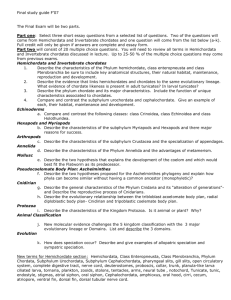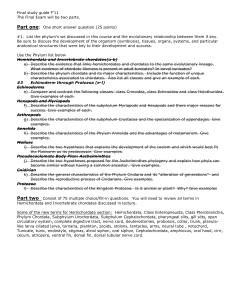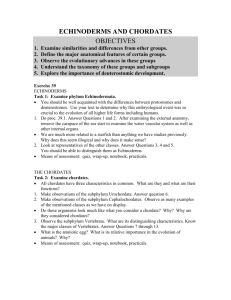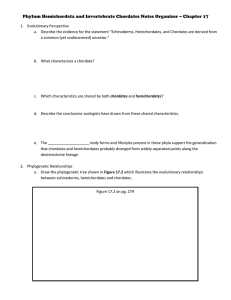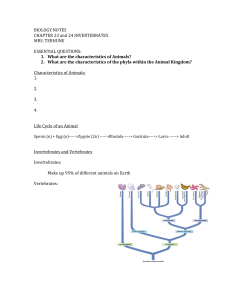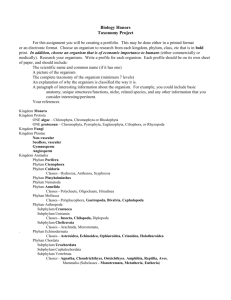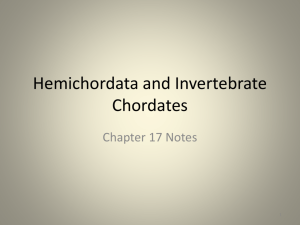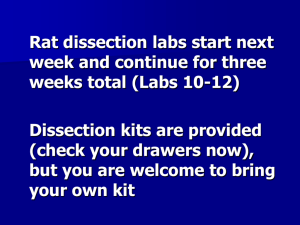13. Echinoder- mata 14. Chordata
advertisement
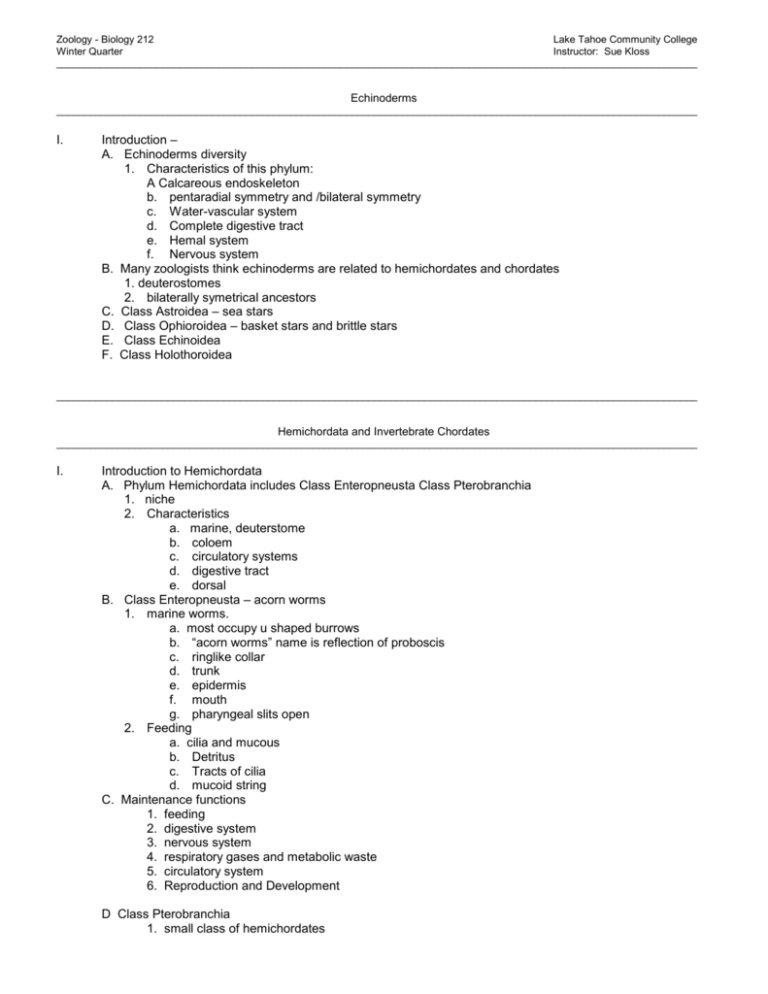
Zoology - Biology 212 Lake Tahoe Community College Winter Quarter Instructor: Sue Kloss ___________________________________________________________________________________________________________________ Echinoderms ___________________________________________________________________________________________________________________ I. Introduction – A. Echinoderms diversity 1. Characteristics of this phylum: A Calcareous endoskeleton b. pentaradial symmetry and /bilateral symmetry c. Water-vascular system d. Complete digestive tract e. Hemal system f. Nervous system B. Many zoologists think echinoderms are related to hemichordates and chordates 1. deuterostomes 2. bilaterally symetrical ancestors C. Class Astroidea – sea stars D. Class Ophioroidea – basket stars and brittle stars E. Class Echinoidea F. Class Holothoroidea ___________________________________________________________________________________________________________________ Hemichordata and Invertebrate Chordates ___________________________________________________________________________________________________________________ I. Introduction to Hemichordata A. Phylum Hemichordata includes Class Enteropneusta Class Pterobranchia 1. niche 2. Characteristics a. marine, deuterstome b. coloem c. circulatory systems d. digestive tract e. dorsal B. Class Enteropneusta – acorn worms 1. marine worms. a. most occupy u shaped burrows b. “acorn worms” name is reflection of proboscis c. ringlike collar d. trunk e. epidermis f. mouth g. pharyngeal slits open 2. Feeding a. cilia and mucous b. Detritus c. Tracts of cilia d. mucoid string C. Maintenance functions 1. feeding 2. digestive system 3. nervous system 4. respiratory gases and metabolic waste 5. circulatory system 6. Reproduction and Development D Class Pterobranchia 1. small class of hemichordates 2. Pterobranch bodies are divided into three regions III. Phylum Chordata A. number of spp. 1. adapted to many aquatic and terrestrial environments 2. characteristics 3. 4 characteristics unique to chordates IV. Subphylum Urochordata A. this subphylum is the tunicates or sea squirts 1. Class Ascidia 2. appendicularians 3. tunic B. Maintenance functions 1. longitudinal and circular muscles 2. act against hydrostatic skeleton 3. nervous system 4. most obvious internal structure is pharynx and large cavity 5. digestive system 6. Atrium 7. heart 8. nitrogenous waste C. Reproduction and Development 1. Urochordates are monoecious D. Subphylum Cephalochordata - lancelets E. Largest and most successful chordates belong to subphylum Vertebrata 1. bony or cartilaginous vertebrae completely or partially replace notochord Lesson Objective Qs 1. What are 3 or 4 characteristics of phylum Echinodermata? 2. List 3 organisms in this phylum. 3. What are 3 or 4 characteristics of phylum Hemichordata? 4. List an organism in this phylum. 5. Describe the structure of an acorn worm (Class Enteropneusta.) 6. Describe feeding, circulation, digestion, reproduction and nervous system characteristics of this phylum. 7. . Describe 4 defining characteristics common to organisms of Phylum Chordata. 8. Describe the structure of tunicate (Subphylum Urochordata.) 9. Describe feeding, circulation, digestion, reproduction and nervous system characteristics of this subphylum. 10. List an organism and its niche in subphylum Cephalochordata. 11. List all the classes, and 2 representative organisms for each class in subphylum vertebrata.
